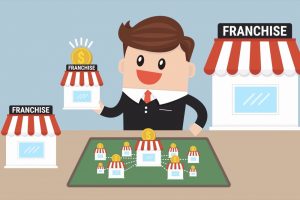How Does Generative AI Actually Work
At the core, its powered by a machine learning model called GPT-4 (Generative Pretrained Transformer 4). Here’s a simplified explanation of how it works:
- Training: During training, the model is shown a large amount of text data (from books, websites, etc.) but is not given any specific information about the content or who wrote it. The model learns to predict the next word in a sentence. Through this process, it gains understanding of grammar, facts about the world, and to some degree, reasoning abilities. However, it’s important to note that while it learns patterns from data, it doesn’t “understand” text in the way humans do.
- Generation: When you ask a question or write a prompt, it will generate a response based on patterns that learned during training. It look at the words you’ve used and try to predict the next word in the sentence, over and over, until a full response is formed.
- No memory of past interactions: This type of system will not have the ability to recall or learn from past interactions. Each conversation doesn’t have a history beyond the current conversation. Remember, the current conversation can be multiple interactions with the system, requesting various results.
- Limitations: While it can provide information and mimic human-like text based on patterns learned during training, the responses are not influenced by personal experiences or emotions because it does not have those. It can make mistakes, especially when asked about events or information after the last training cut-off date.
It’s important to remember that even though the system will strive to provide accurate and helpful information, you should consult with a human expert or trusted source when making important decisions. These systems are very powerful and use advanced filtering and results from training to get better and better results.
These technologies represent the next phase of software and systems and will present distinct advantages for businesses who can leverage these solutions within a fully integrated system, like CloudFran. A fully integrated system will have all your personalized data through usage, allowing for a seamless extension of your information for powerful augmentation to the AI CloudFran solution. Best of all, there is no additional workflow required to achieve these fantastic results! The 22nd Century starts on cloudfran.com.
Whats Next
CloudFran offers an innovative technology solution tailored specifically for franchise businesses, with a primary focus on streamlining operations, optimizing efficiency, and enhancing the customer experience. The CloudFran platform integrates advanced features that support both franchisors and franchisees by delivering an all-in-one solution designed to meet the complex demands of multi-location businesses.
At the core of CloudFran’s solution is a comprehensive franchise management system that enables centralized oversight of all franchise operations. This system empowers franchisors to easily manage compliance, training, and communication across all franchise locations. Key features include a robust Customer Relationship Management (CRM) tool, which facilitates efficient interaction with customers, tracks engagement, and enhances customer retention through personalized marketing strategies.
The CRM is specifically tailored for franchises, allowing franchisors to provide consistent branding and customer experiences across all locations while giving franchisees the ability to manage local customer relationships.
CloudFran also integrates with Point of Sale (POS) systems to streamline transactions, inventory management, and sales reporting. The platform’s POS capabilities allow franchisees to track sales performance in real-time, while franchisors can maintain a bird’s-eye view of sales trends across multiple locations. This integration enhances transparency, enabling franchisors to make data-driven decisions that support the growth of the franchise network.
In addition, CloudFran leverages cloud-based technology, ensuring that all data is securely stored and accessible from anywhere, at any time. This flexibility allows franchises to scale quickly, while reducing the need for physical infrastructure and minimizing IT costs. CloudFran also incorporates AI-powered analytics to provide actionable insights, helping franchise businesses optimize marketing strategies, enhance customer service, and streamline operations for maximum efficiency.
CloudFran’s technology solution is designed to address the unique needs of restaurants, health and wellness franchises, and other service-based businesses, delivering an exceptional balance of operational control and customer engagement. With built-in automation, detailed reporting, and seamless integration with third-party tools, CloudFran provides franchises with a powerful platform to manage day-to-day operations and scale their business effectively in an increasingly competitive market.







